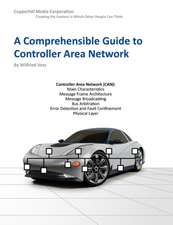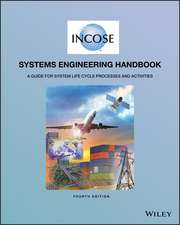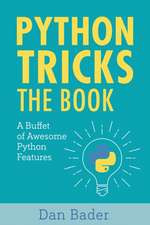Requirements Engineering
Autor Elizabeth Hull, Ken Jackson, Jeremy Dicken Limba Engleză Paperback – oct 2014
| Toate formatele și edițiile | Preț | Express |
|---|---|---|
| Paperback (2) | 303.18 lei 38-44 zile | |
| Springer International Publishing – 7 aug 2018 | 303.18 lei 38-44 zile | |
| SPRINGER LONDON – oct 2014 | 471.19 lei 6-8 săpt. | |
| Hardback (1) | 437.99 lei 3-5 săpt. | +24.51 lei 4-10 zile |
| Springer International Publishing – sep 2017 | 437.99 lei 3-5 săpt. | +24.51 lei 4-10 zile |
Preț: 471.19 lei
Preț vechi: 588.99 lei
-20% Nou
90.19€ • 98.00$ • 75.81£
Carte tipărită la comandă
Livrare economică 21 aprilie-05 mai
Specificații
ISBN-10: 1447158180
Pagini: 228
Ilustrații: XVIII, 207 p.
Dimensiuni: 155 x 235 x 17 mm
Greutate: 0.33 kg
Ediția:3rd ed. 2011
Editura: SPRINGER LONDON
Colecția Springer
Locul publicării:London, United Kingdom
Public țintă
Professional/practitionerCuprins
Textul de pe ultima copertă
Caracteristici
Notă biografică
Jeremy Dick has been consulting in tool-supported requirements processes for over 20 years, across a wide range of sectors in the UK and elsewhere, most recently in the Civil Nuclear and Oil & Gas industries. A past chairman of the INCOSE International Requirements Working Group, he has contributed to the development of the discipline, particularly with regard to traceability.
Elizabeth Hull is Professor Emerita of Computing Science at Ulster University. She has published extensively on software engineering and requirements engineering. She is a Chartered IT Professional and an Honorary Fellow of the BCS, The Chartered Institute for IT.
Ken Jackson has over 40 years experience in the development of real time systems. For 16 years he worked as a requirements management consultant in a wide set of domains including defence, automotive, aerospace and telecommunications. He has contributed to INCOSE and is a founder member of the IEEE committee on ECBS (Engineering of Computer Based Systems).
Descriere
Written for those who want to develop their knowledge of requirements engineering process, whether practitioners or students.
Using the latest research and driven by practical experience from industry, Requirements Engineering gives useful hints to practitioners on how to write and structure requirements. It explains the importance of Systems Engineering and the creation of effective solutions to problems. It describes the underlying representations used in system modeling and introduces the UML2, and considers the relationship between requirements and modeling. Covering a generic multi-layer requirements process, the book discusses the key elements of effective requirements management. The latest version of DOORS (Version 7) - a software tool which serves as an enabler of a requirements management process - is also introduced to the reader here.
Additional material and links are available at: http://www.requirementsengineering.info



















